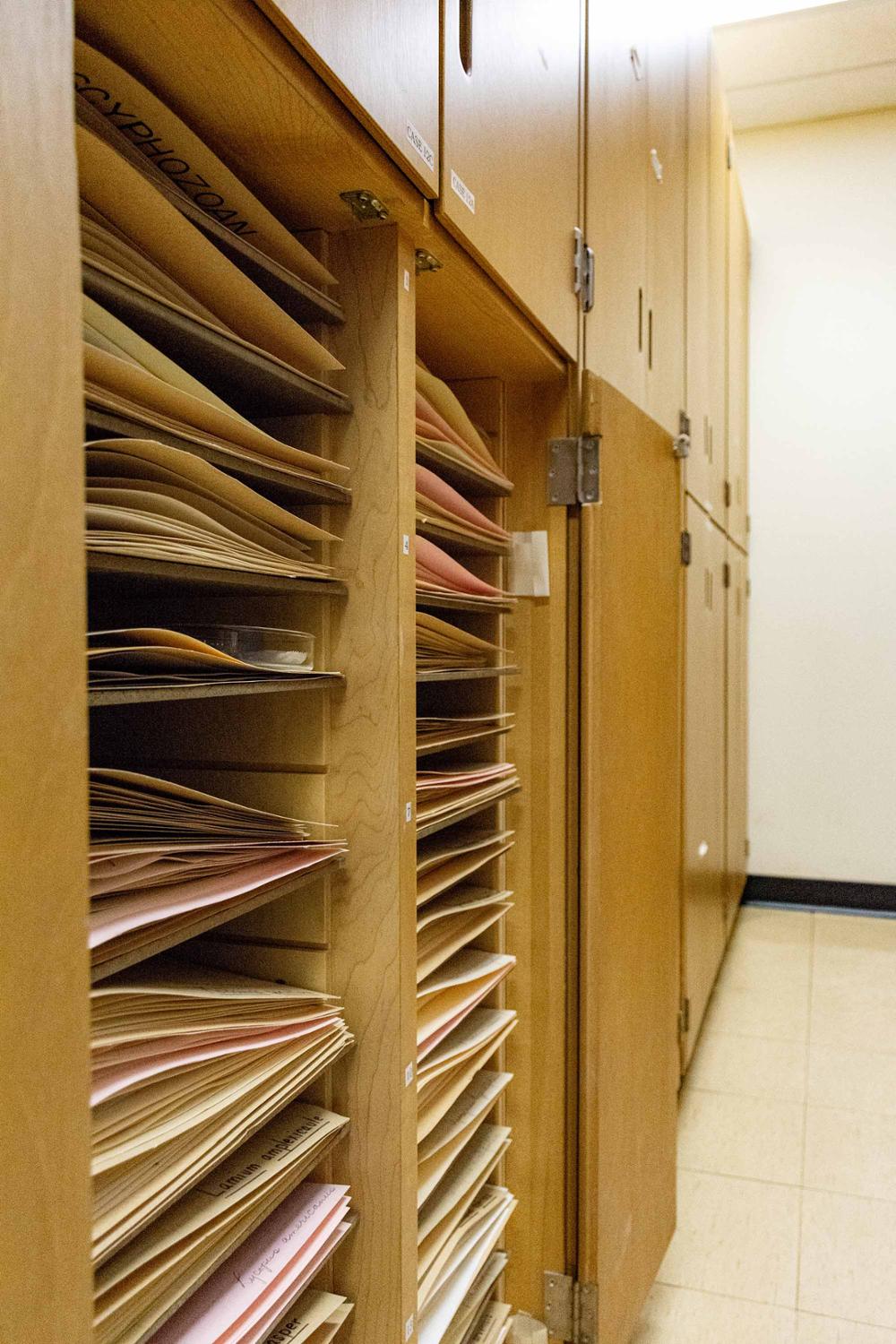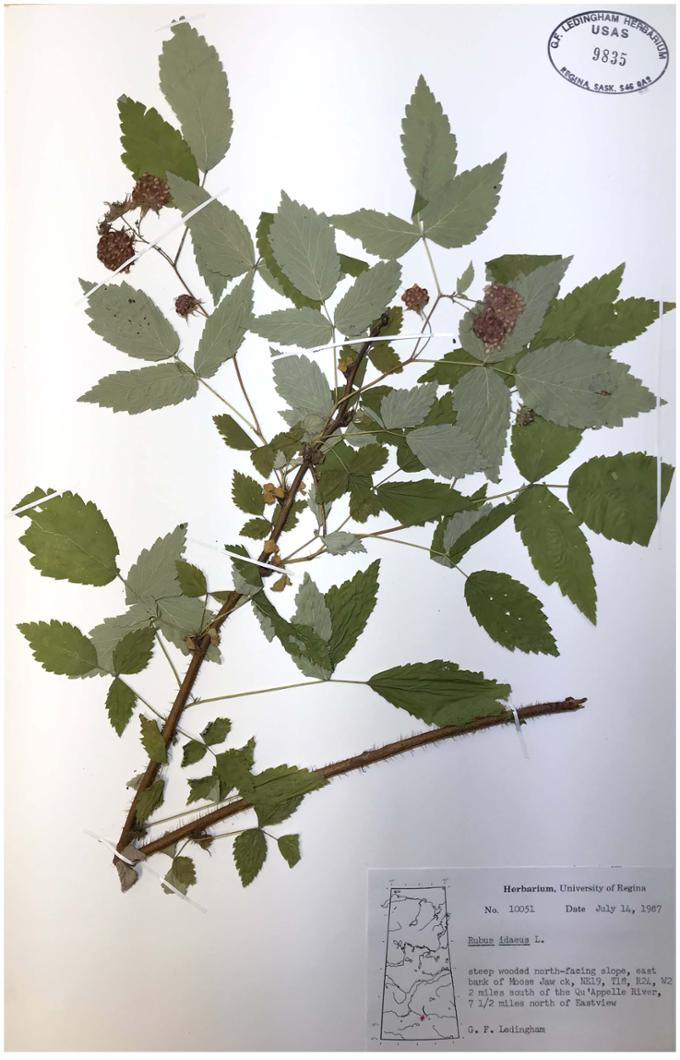Deep in the halls of the University lives a curiosity cabinet of more than 70,000 specimens of plants, flowers, mosses, and lichens. The George F. Ledingham Herbarium is the legacy of its founder, whose life’s passion was collecting plants and preserving the natural prairie landscape. Some specimens in the collection date back as far as the 1920s and range into the 2000s. The herbarium, which is maintained by the Department of Biology is of special use to taxonomists, field ecologists, and those working with endangered plant species.
“It’s a nice way to see how the landscape has changed over time,” says Mel Hart, an Associate Dean of Science at the U of R. “They’re mainly representative of species in Saskatchewan but there are samples outside Saskatchewan – various parts of Canada, and around the world.”

On Thursday, September 29, Hart will take part in an online discussion as part of Culture Days with four visiting artists through the Art Gallery of Regina (AGR) about how plant life is represented by artists and biologists – and, in turn, how we all see the natural world. The artists, Heather Shillinglaw, Laurel Terlesky, Rachel Broussard, and Alyssa Ellis (whose work is drawn from the biology of plants), will join Hart to discuss the role of the artist in plant representation – and how it differs from that of biologists. The artists’ interdisciplinary work ranges widely in material from botanical drawings, collage, media, and performance. “There’s a lot of overlap in the passion for living beings, and the care that goes into the plants that we’re all looking at,” Hart says.
Hart’s involvement in the project came about after attending a workshop offered through the AGR earlier this summer. “It was a soundscape exhibit. We were tethered by way of headphones and amplifier to an artist who took us around the park and we got to listen to the environment.” That experience sparked a conversation with AGR curator Sandee Moore and the plan was hatched for this Thursday evening’s online discussion, which can be viewed on the AGR’s YouTube channel.
Science is often seen as really dry and unapproachable. If you can have a conversation sparked by a piece of art that brings in some of the science, it makes it more approachable for people, and we can have those critical conversations that need to be happening. Mel Hart, Associate Dean of Science
“There’s a nice connection between the artist’s pieces, and then some of the specimens in the collection – they’re really displayed in an artistic way,” Hart says. “It’s not just plants slapped on a sheet. There’s care taken in how they’re presented, how they’re laid out. There are general rules, but you can often identify the work of the collector by how they’re presenting their piece. Before you even look at the label, you can often tell, ‘oh, that looks like it was collected by so-and-so because they’ve put the plant in this particular arrangement.’ So there is some room for individuality.”
The potential for more collaboration between the sciences and art is especially exciting for Hart, who hopes to see increased cross-pollination between the disciplines. “Science is often seen as really dry and unapproachable,” she says. “If you can have a conversation sparked by a piece of art that brings in some of the science, it makes it more approachable for people, and we can have those critical conversations that need to be happening.”
How Artists and Biologists See Plants Differently
Thursday, September 29
6 – 8 p.m.
Online through the Art Gallery of Regina
Watch on YouTube
Learn More About the George F. Ledingham Herbarium
Developing the University of Regina's Impact & Identity is part of our 2020-2025 Strategic Plan kahkiyaw kiwȃhkomȃkȃninawak – All Our Relations. We are committed to strengthening our reciprocal relationships and serving the social, cultural, economic, environmental, and technological needs of our communities.
